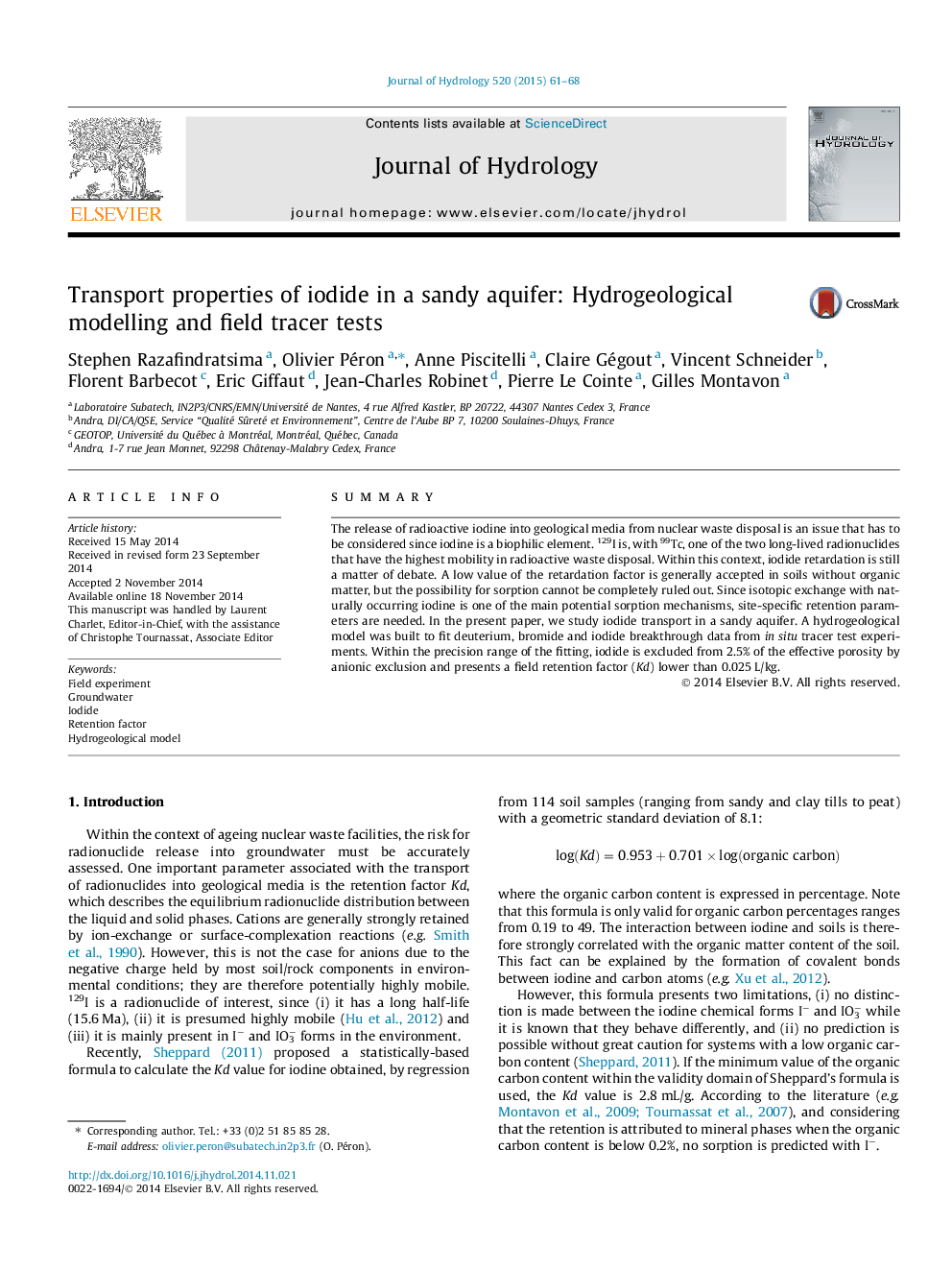| Article ID | Journal | Published Year | Pages | File Type |
|---|---|---|---|---|
| 6411817 | Journal of Hydrology | 2015 | 8 Pages |
â¢A new hydrogeological model was built in order to predict the behaviour of species.â¢To perform the model, two in-situ tracer tests with Dirac injection were led.â¢An anionic exclusion porosity of 2.5% was found for bromide and iodide tracers.â¢A sensitivity analysis was done where the Kd value was changed from 0.01 to 0.05: a limit value of 0.025 L/kg can be given.
SummaryThe release of radioactive iodine into geological media from nuclear waste disposal is an issue that has to be considered since iodine is a biophilic element. 129I is, with 99Tc, one of the two long-lived radionuclides that have the highest mobility in radioactive waste disposal. Within this context, iodide retardation is still a matter of debate. A low value of the retardation factor is generally accepted in soils without organic matter, but the possibility for sorption cannot be completely ruled out. Since isotopic exchange with naturally occurring iodine is one of the main potential sorption mechanisms, site-specific retention parameters are needed. In the present paper, we study iodide transport in a sandy aquifer. A hydrogeological model was built to fit deuterium, bromide and iodide breakthrough data from in situ tracer test experiments. Within the precision range of the fitting, iodide is excluded from 2.5% of the effective porosity by anionic exclusion and presents a field retention factor (Kd) lower than 0.025Â L/kg.
Graphical abstractDownload full-size image
